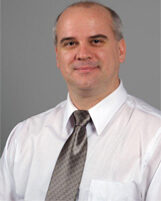According to the schedule, this master’s student will be in charge of the following tasks:
1) 1-14 Preliminary evaluation of SDR radios (DME aspect)
2) 1-32 Research into DME functionalities
3) 2-11 Finalize DME SDA with initial interoperation
4) 3-11 Evaluatation of DME to MOPS performances under static conditions
5) 3-32 Bench testing and analysis of individual DME SDA
The general objective of the Master’s research project is to develop a thorough analysis of the cooperating software environment. Initial analysis and tests will be done in a desktop environment which will involve the use of some developed simulation modules. The master’s student is to perform the analysis of the individual SDAs using simulated real-time measurements. The testing will be done on the bench using the ATC/DME test gear. The master’s student will aim to understand as much as possible interoperability with the remaining avionics suite (EFIS, Short Range Nav (SRN) coupling, VHF & UHF pairing, auto-pilot interconnection, display outputs, ARINC databus entities). Hence, the three Master’s students, working on the project in any given year should work very close and discuss with the post-doctoral fellow about their research, modules, and how interoperability issues will get resolved. The master’s student in this position in the third year will concentrate on integration issues, and integrating the SDA developed by the earlier two masters. He will augment the basic functionality of the earlier master’s students with the interoperability functionality (one of the scientific objectives), and integrate the SDA with the remaining two. A further goal after a complete evaluation and validation on desktop, tests and analysis will be done on real-time data acquired in comparison with the reference DME receiver data, as well as, any “other side” data that can be acquired from the conventional DME in airborne testing (example: GPS and Air Data Computers inputs will contribute as comparators to the performance avalysis). The main goal of this project is to give a thorough insight into DME transmitter weaknesses (such as adjacent channel power ratio, bandwidth, time envelope etc.) and errors. Each of the 12 months Master’s research projects will start with a meticulous analysis of the minimum operation performance standards MOPS, of the DME outlined in RTCA documents DO-180A and DO-189. A bibliographical study of the existing flight characteristics of DME transceivers, their integration with Area Nav RNAV receivers, Flight Management Systems (FMS), ARINC Databuses, and Avionics suites will be required to understand what improvements could be considered and to be able to obtain good models and analyses, and later on, during flight tests (with appropriate permission from Nav Canada and Transport Canada). Permission will be sought, and obtained for any transmitter testing required, outside of captivated signals (i.e. coax to test equipment directly).
![]()
